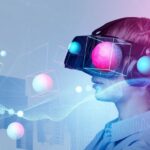Digital Twins and Workplace Optimization
For companies investing in digital twins, workplace optimization is often a key goal. After all, countless organizations today are under increasing pressure to accomplish more with less, but many are losing money, and battling inefficiencies without realizing it.
Some businesses lease large office spaces, but hybrid teams only use a fraction of the rooms available. Others waste time, money, and energy on inefficient workflows, reactive maintenance, and problematic decision-making processes. Digital twins could be the answer.
Studies from analysts like McKinsey have shown digital twins can reduce waste, accelerate product development, and help companies achieve sustainability goals. The benefits extend beyond the industrial sector too – influencing organizations in virtually every industry.
So, how do digital twins truly enhance workplace optimization?
The Key Benefits of Digital Twins: Workplace Optimization
Currently growing at a CAGR of 40.1%, the digital twin market is expected to reach a value of $259.32 billion by 2032, highlighting the growing potential of the technology. With digital twins, workplace optimization strategies enter a new era.
Companies can unlock endless opportunities to reduce costs, improve efficiency, and improve innovation, particularly when combining digital twins with AI and XR. Digital twins empower:
- Real-time insights: Digital twins aren’t the same as traditional simulations. They draw instant, real-time data from various sensors and devices, making it easy for companies to make intelligent decisions. For instance, a digital twin of an office space could show you exactly which rooms employees use on different days, so you can reduce real estate costs.
- Reducing costs and energy consumption: Speaking of minimizing costs, digital twins don’t just help businesses cut down on wasted space. They allow companies to experiment with product designs, blueprints, and processes in a virtual space. This minimizes the need to invest in physical resources, and reduces energy consumption and carbon emissions.
- Improving Employee Collaboration & Productivity: Digital twins help teams to work more effectively together, regardless of their location. With XR, employees can step into virtual environments where they can build products, engage in training, and interact with colleagues. Digital twins can even cut development times for products by up to 50%.
- Predictive Maintenance & Equipment Monitoring: Expensive repairs and unexpected downtime cause serious problems for businesses. Digital twins use IoT sensor data to alert you when equipment is about to fail. You replace the part pre-emptively, so there’s no costly downtime. That predictive edge can save you thousands or millions of dollars.
Digital Twins: Workplace Optimization Case Studies
With digital twins, workplace optimization is an easier, more intuitive, and more data-driven process for organizations across industries. Numerous case studies across sectors are highlighting the potential here, inspiring companies of all sizes to join the digital twin era.
Infrastructure, Urban Planning and Smart Cities
Urban planners are turning to digital twins for everything from predicting traffic flows to preparing for climate change. City-scale digital twins aggregate geospatial data, sensor inputs, and architectural models into one giant real-time simulation. This means teams can make more informed decisions about public transit, zoning, and emergency response plans.
Infrastructure and planning teams for smart cities use digital twins to combine and visualize key data sets, simulate mobility and usage patterns for towns and cities, and even achieve sustainability goals.
ABI research predicts that over 500 cities will deploy digital twins by 2025. However, certain locations are already getting started. Singapore, for instance, created the “Virtual Singapore” digital twin to allow planners to run scenario tests safely for everything from traffic jams to disasters.
Instead of patchwork solutions, they use citywide data to make decisions about infrastructure and resources. The government can see how a new skyscraper would affect wind patterns, or how a highway might redirect rainwater during monsoon season.
Retail and Ecommerce: Optimizing Customer Service
The retail sector represents a growing environment for digital twins. Workplace optimization strategies using digital twins in this sector can help teams cut costs, improve sales and marketing strategies, and enhance operations. For instance, teams can build virtual stores and test different layouts based on customer needs.
Sales and marketing teams can integrate 3D models into e-commerce platforms, letting customers “try” products virtually. Just look at Ebay’s 3D TrueView feature for sneakers – which allows customers to view shows from every angle.
Retailers can even use process digital twins to track stages in a logistics process or supply chain, accessing real-time insights into strategies that can help them reduce emissions or improve buyer experiences. For instance, Anheuser-Busch inBev uses supply chain digital twins to minimize production bottlenecks.
Manufacturing: Digital Twins, Workplace Optimization and Maintenance
The manufacturing sector was one of the earliest adopters of digital twins for workplace optimization, and process enhancements. Factories worldwide are using digital twins connected to IoT sensors to enhance workspace designs and layouts, run robotic simulations, and even train operators.
For many manufacturing companies using digital twins, workplace optimization also means investing in proactive maintenance strategies. Companies can use the data gathered by digital twin systems to stay one step ahead of potential machinery issues, and unexpected downtime.
A Forrester Consulting study commissioned by Unity found that over 80% of companies using immersive tech in production phases saw improvements in innovation and collaboration. XR and digital twins can even help cut costs. For instance, Clorox used Vuzix M400 smart glasses and digital twins for remote audits and plant training. Without flying engineers everywhere, Clorox saved nearly $949 per person in travel costs and cut machine downtime by 20%
Healthcare: Enhancing Patient Care and Team Productivity
Hospitals and medical office buildings have unique demands. Patient flow, specialized equipment, and tight safety standards make constant workplace optimization crucial. Digital twins can be extremely useful here, allowing companies to constantly monitor how patients, staff, and supplies move through an environment.
For example, the Healthcare Trust of America teamed up with Matterport to build digital twins of their properties. The 3D scans let teams virtually explore each space, removing the need for costly site visits. This means leasing decisions and renovations happen faster.
If a doctor wants to expand her clinic, the digital twin reveals if there’s enough square footage next door, or if a different site makes more sense. Ultimately, with digital twins, workplace optimization becomes about more than just saving money – it’s about improving experiences for everyone.
Automotive: Upgrading Innovation
Today’s automotive companies face a lot of pressure to adapt fast to changing consumer demands, new technologies, and rapid growth. Many car makers once spent months (even years) prototyping vehicles, only to discover a critical flaw late in the process.
With digital twins, workplace optimization in this sector allows automotive brands to simulate how a design will perform long before physical prototypes are built. They can create 3D prototypes, that employees and even customers can experiment with using extended reality headsets.
Automotive companies can even use digital twins to identify potential production bottlenecks and waste. Volvo Cars, for instance, uses digital twins to speed up design cycles and cut the number of physical prototypes needed. This saves on materials but also reduces time spent back-and-forth between engineering and design teams.
Volvo also uses immersive showrooms where potential buyers can explore a new model in VR, customizing paint, interior, and more.
Energy: Digital Twins, Workplace Optimization, and Sustainability
As concerns around carbon emissions continue to grow, energy companies are constantly exploring new ways to enhance sustainability. But running eco-conscious plants, such as wind farms, isn’t easy. Every environment is often unique, and teams need to constantly monitor landscape variations, weather patterns, and turbine performance.
Digital twins offer a solution. Companies like GE use digital twins to feed real-time data from each turbine into a virtual environment. The system then uses AI to optimize turbine angles, blade rotations, and even predict mechanical failures.
By pairing actual sensors with a virtual model, energy companies can adapt continuously. If a gust picks up in one part of the field, the digital twin might redistribute loads so all turbines share the stress. Over time, that means fewer breakdowns and more consistent power generation.
Digital Twins & Workplace Optimization: The Future
With digital twins, workplace optimization strategies are evolving at incredible speed. Companies in all industries are discovering more effective ways to run more efficient, agile, and intuitive operations.
The biggest benefit? Communication. Instead of wrestling with scattered spreadsheets or siloed data systems, managers see everything in one place. On top of that, the technology itself is rapidly evolving. IoT sensors are getting cheaper, 5G networks are expanding, and AI-driven analytics are more powerful than ever.
Quelle:


